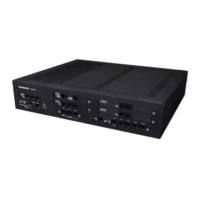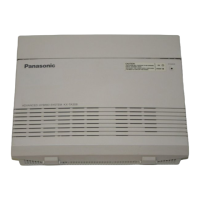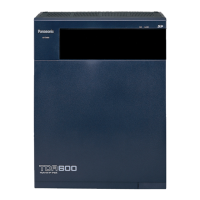Note
The
examples in this section are intended to illustrate the concept of DSP resource usage. More complex
situations may necessitate additional resources, and in some cases fewer resources may be necessary.
Examples of DSP resource usage
Fundamentally, the number of resources required for a given situation is the sum of the resources required for
each individual operation. The following examples illustrate DSP resource usage in various situations.
[IP CO line to IP extension]
IP CO line
IP-PT
X
Y
PBX
G.729A
G.711
If an IP CO line call using the G.729 codec requires X
number of resources, and an IP extension call using the
G.711 codec requires Y number of resources, then the number of resources required for a call from an IP
extension to an IP CO line requires X + Y number of resources.
[Unified Messaging access]
Playing back messages from or recording messages to the Unified Messaging (UM
in the figure above) system
requires DSP resources, X in this example, in addition to the resources required for the G.711 codec (Y). The
total cost is X + Y.
[Conference call]
IP CO line
IP CO line
SLT
IP-PT
PBX
W
Y
Z
X
X
X
X
G.729A
Analog
Conference
G.711
G.711
G.711
G.711
A conference requires additional resources, Y, for handling the multiple voice channels. Also, in standard
two-way
conversations, analog lines generally do not require any DSP resources, but in a conference they do.
In addition, IP CO lines in a conference require additional DSP resources.
For this example, then, the number of required resources is X + X + X + X + Y + Z + W.
Document Version 2016-03 Feature Manual 119
5.1.18 DSP Resource Usage

